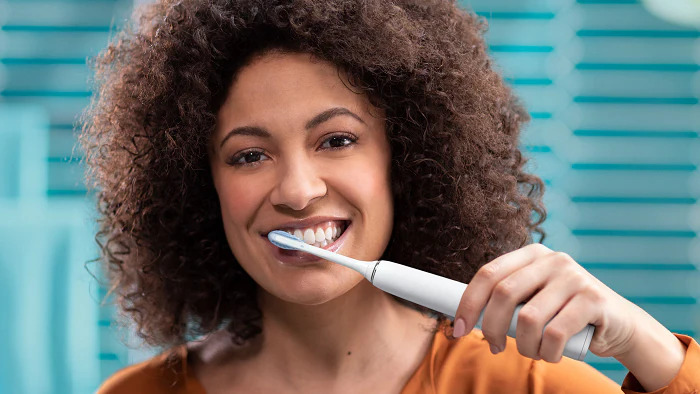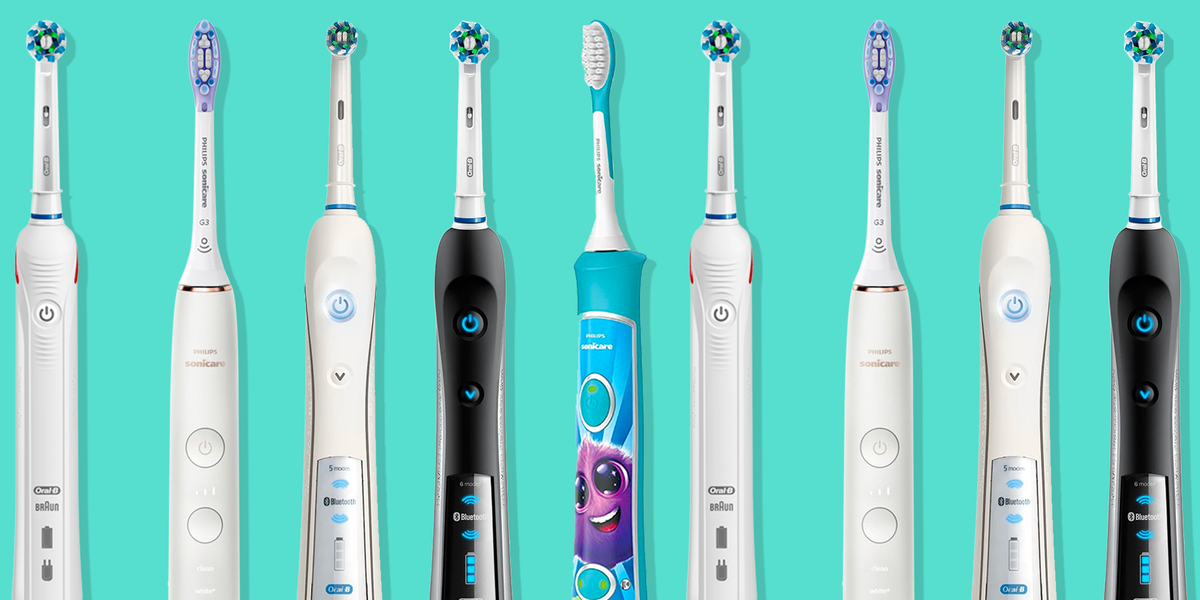Brushing your teeth is the foundation of good oral care and prevention. Both electric and manual toothbrushes are effective at removing oral plaque the cause of decay and disease, but which should you use, an electric or manual toothbrush?
Dentists will often tell their patients that the most important things where tooth-brushing is concerned is to:
These can be achieved whether you are using a manual brush or an electric brush. But maybe using an electric toothbrush is more effective and helpful.

A review of studies showed that, in general, electric toothbrushes do remove more plaque and decrease gingivitis (gum disease) than manual toothbrushes over time compared with a regular manual toothbrush. If you use a small headed electric toothbrush, such as an Oral-B, the round, oscillating head, can make reaching these awkward areas easier, particularly areas at the back of your mouth. Electric toothbrushes where the bristles vibrate allows for more micro-movements every time you move your toothbrush across your teeth.
An electric toothbrush does most of the work. It may be helpful for children who should be supervised when tooth-brushing until at least the age of 9), as well as anyone with limited mobility, such as people with:
Electric toothbrushes allow the user to let the toothbrush do the work for them, so long as they are moved around the mouth, along each surface of each tooth, effective tooth-brushing can be achieved, even with poor dexterity.
Well, most electric toothbrushes come with a built-in timer, which makes the user aware of how long they’ve been brushing their teeth for, unlike manual brushes. This can be particularly useful where children are concerned, however, using an egg timer or playing a 2-minute-long song while brushing, is always an alternative option, but it isn’t always convenient – especially with a tired and ratty child…or parent!
When it’s time for a new toothbrush, you only have to replace an electric toothbrush head in many cases, so it may be less wasteful than throwing away a full manual toothbrush.
However, if you use a single-use electric toothbrush, you’ll have to completely replace it when it becomes frayed or at least every 3 months.

At least one study found that people were more focused when brushing their teeth using an electric toothbrush. This improved people’s overall experience brushing and could potentially improve how well you clean your teeth.
A study found that electric toothbrushes were particularly helpful for people with orthodontic appliances, such as braces, because it made brushing easier.
Among people with appliances who already had good oral health, plaque levels were about the same, whether they used an electric toothbrush or not. But if you find it difficult to clean your mouth while having orthodontic therapy, the electric toothbrush may improve your oral health.
Not all kids are interested in brushing their teeth. If an electric toothbrush is more engaging to your child, it can help accomplish good oral cleaning and set healthy habits.
Used properly, an electric toothbrush should not hurt your gums or enamel but instead promote overall oral health. Many people are guilty of brushing too hard, which can, over time, cause irreversible damage to tooth enamel and can cause receding gums, which is also irreversible. Some electric toothbrushes have a sensor, which then emits a coloured light when too much pressure is being applied, notifying the user to brush more gently.

There are a few categories of electric toothbrushes. The main difference is how the brush moves:
Rotary: The head moves in a circular motion at 3,000 to 7,500 strokes per minute. A toothbrush where the head alternates directions is called rotation oscillation.
Sonic: These use a side-to-side motion at a speed at about 10 times that of a rotary brush -- about 31,000 brush strokes per minute.
Ultrasonic: The fast side-to-side motion creates vibrations that dislodge plaque.
Ionic: The brush head doesn’t move. A low electric current in the bristles attracts plaque.
Which type is best? Right now, there isn’t enough research to say for sure.

Sure, manual toothbrushes are cheap and convenient, but they're not always the gentlest on sensitive teeth, nor do the bristles on their brush heads do the best job combatting plaque and bacteria. The best electric toothbrushes (paired with a good toothpaste), however, are much more effective and have many useful features—and there are many models from which to choose.
There's no better time than the present to finally buy an electric toothbrush for yourself (or as a gift for your mom, dad, or significant other).